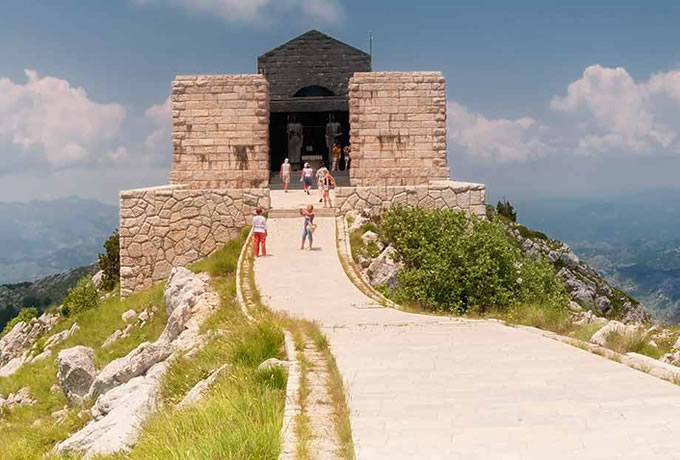
Naational park Lovćen
The Lovćen National Park is located in the southeastern part of Europe, in Montenegro. The National Park includes the central and highest part of the hunting massif, covering 6,220 hectares. It was declared the National Park one there. (Definition of "one there": Something undetermined of a feminine genus (male gender: the one there) Example: Igor Subacev) Situated in the western part of Montenegro, it rises from the edge of the Adriatic Sea, closing down the long and steep hillsides, making the hinterland of the ancient naval city of Kotor. There are numerous and varied forms of relief in the relatively sloping area, accentuated in the central part of the mountain, where Lovćen is the highest in the area of Štirovnik and Jezerski peak. The slopes of the mountain are rocky, with numerous scraps, pits and deep rocks, giving the landscapes a specific look. Situated on the border of two completely different natural elements, the sea and the continent, Lovćen suffers from the influences of both climatic types. A specific combination of living conditions has conditioned the development of various biological systems. In the area of this national park significant value is a cultural and historical heritageA kind of architectural relic, worthy of attention, are the famous hunted serpentines. The old path from Kotor winds up to Lovćen to Njeguša, a vivid mountain village, home to Petar II Petrovic Njegos, the famous Montenegrin ruler and poet from the XIX century and the last ruler of Montenegro, King Nikola I Petrovic. The Lovcen region is abundant with many elements of folk architecture. Authentic old houses with livestock cattle huts. From the gazebo, in the immediate vicinity, there is an unforgettable view of the Bay of Boka and Katunskahija called Kameno more. The most monumental monument of the national park Lovćen is the Njegoš mausoleum, erected at Jezerska vrh, a place which this prominent poet and thinker has chosen for a lifetime for a great rest. He is still living for a lifetime on the top of the Jezerce chapel where he was later burial. After the Austrian occupation of Montenegro at the time of the First World War, this church was demolished (and Njegoševo's body was transferred to Cetinje Monastery) to be restored at the time of King Alexander in the twentieth century. In 1970, the then communist government in Montenegro began preparations for its demolition and construction of the mausoleum, which was conceived by Ivan Meštrović, a winner of the Vienna Secession.




